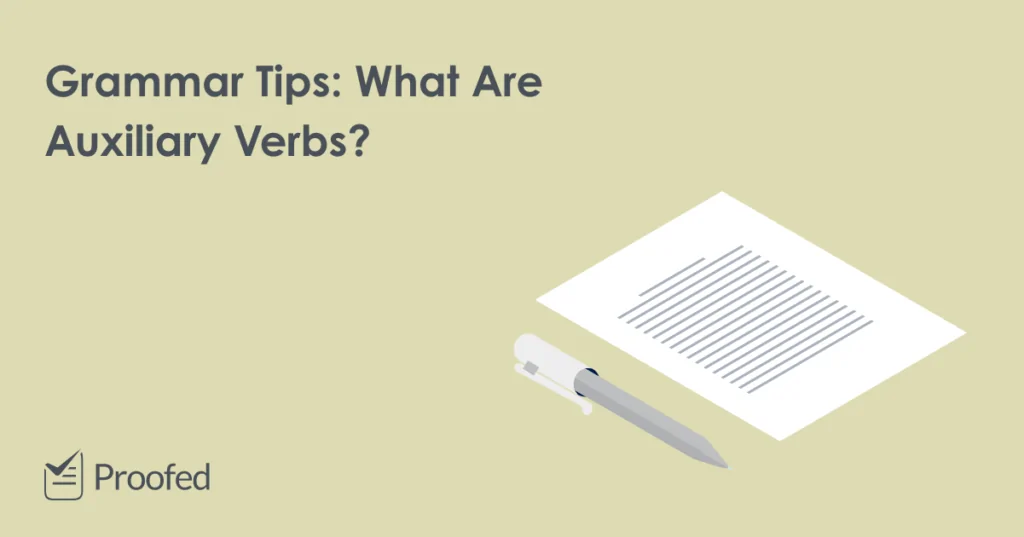Most English speakers use auxiliary verbs every day, even if they’ve never heard the term ‘auxiliary verb’ before. But what are they? Why are they also known as ‘helping’ verbs? And when should you use them in your writing?
In this post, we explain the basics of how auxiliary verbs work.
Auxiliary Verbs: Be, Have, Do
Auxiliary verbs are known as ‘helping verbs’ because they ‘help’ other verbs: i.e. we use them alongside other verbs to form certain types of sentence.
The three main auxiliary verbs in English are ‘be’, ‘have’, and ‘do’ in their various forms. You can see examples of these helpful verbs below in blue, along with the main verb in each sentence in green:
He is going back to school next week.
They have won all their matches so far.
Do you like our garden?
These auxiliary verbs can help us to form tenses, switch to the passive voice, form negations, or add emphasis. We’ll look at these uses below.
Helping Verbs and Tense
Sometimes, we need an auxiliary verb to express a sentence in a specific tense. For the perfect tenses, we use a form of ‘have’ plus a past participle:
I have visited many countries.
They had listened carefully in class.
In the progressive tenses, we use a form of ‘be’ with a present participle:
We are going to town today.
She was learning Spanish at school.
In these cases, then, auxiliary verbs ‘help’ us to form different tenses.
Helping Verbs and the Passive Voice
We can use a form of ‘be’ with a past participle to form the passive voice:
The notes were taken by the researcher.
David was impressed by the speech.
Helping verbs can therefore help us to create an objective tone in writing.
Using ‘Do’ for Emphasis and Negations
We can use ‘do’ as a helping verb to make an emphatic statement:
I do believe in fairies!
Do let me know how you get on!
I did finish my homework.
Find this useful?
Subscribe to our newsletter and get writing tips from our editors straight to your inbox.
We also use it alongside another verb in negations (usually with ‘not’):
Do not go outside after midnight!
I don’t want to leave yet.
She did not wash her hands.
Most negations in English take this form, so ‘do’ is an important little word!
Be, Have and Do as Main Verbs
‘Be’, ‘have’, and ‘do’ can all work as main verbs, too. This means they can be used to form a complete sentence by themselves. For example:
She is a doctor.
I have four pet cats.
We do a lot in the office.
It is only when used alongside another verb they count as auxiliary verbs.
Auxiliary Modal Verbs
There is another class of ‘helping’ verb we haven’t discussed: modal verbs. We use these to express things like ability, possibility, and permission.
The main modal verbs in English are ‘can’, ‘could’, ‘may’, ‘might’, ‘must’, ‘shall’, ‘should’, ‘will’, and ‘would’. Like the other auxiliary verbs above, modal verbs go before a main verb in a sentence. For instance:
He can jump very high.
In this case, adding ‘can’ before ‘jump’ shows that we’re discussing the person’s ability to jump. Other modal verbs work in similar ways:
We might go to the party later.
You should read the book.
May I leave early today?
Sometimes, modal verbs can also be used before another helping verb in a verb phrase, such as in the following sentences:
We might have gone on another day.
She will be leaving tomorrow.
The key is picking the right modal verb for the situation!
Proofreading for Grammar
If you need to be sure you’ve used the right verbs in the right places, our grammar experts can help. Upload a free trial document today and find out more about how proofreading could help you grow as a writer.



